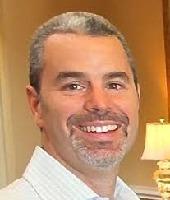Bradley Daigle is the Strategic and Content Expert / Chair for the Academic Preservation Trust / NDSA
As most of this audience knows, the Digital Preservation Coalition (DPC) celebrates the expression of digital preservation in all its forms through its awards process. This year, the NDSA was honored with having been shortlisted in the new Innovation and Collaboration section of the awards for the work that its members and colleagues have done to reboot the NDSA Levels of Digital Preservation. Given the talent and effort by so many who were nominated, this nomination is itself a testament to the role the Levels play within the overall practice of digital preservation.
Many of you have heard how the reboot started but this post will focus on leveraging the nature and types of collaboration within that effort. It is important to realize just how many individuals contributed to this ongoing work and have spent countless hours creating something that can be used by anyone. In 2018 many of us in the profession had begun to hear of grass roots efforts and start up groups looking to update the Levels in some fashion. Originally published in 2013, much of the Levels grid (as it is widely known) was still relevant but some of the deep work undertaken in its use had brought many questions to the fore. Uncertainty of terms, how the Levels might be help with various types of assessment, how to “translate” them for non-specialists, and finally, how to use it as a guide and driver of practice. It became clear that as a hallmark product of the NDSA, it made the most sense for the NDSA to guide and facilitate all the disparate efforts underway. To that end, I undertook the initial steps to determine the need and the key players who would help with the reboot process. A general call of interest to the preservation community resulted in an amazing abundance of ideas and interest. Taking into consideration some key themes, it became clear to me that we had to both honor the keen volunteer interest and atomize a singularly complex effort into digestible chunks. Therefore, in consultation with the NDSA Leadership, we decided to break this up into various subgroups to address some of the major questions: how were people implementing the levels; how could they be used to assess on organization’s strengths and weaknesses; how do we translate them for non-specialists; and finally, in this initial pass, how do we update the grid itself. This approach allowed us to leverage the community’s interest and expertise in a highly strategic manner. As volunteers, we had to be cognizant of the fact that people would have limited time and patience for a protracted process. I volunteered to lead the overall effort as well as chair one of the subgroups. We returned to the community with that idea, having created a charge for each of the various subgroups (which can be seen here). We revisited our call for interest and gave colleagues two options: participate in the working groups or participate in the review and feedback process. Away we went. The rest, they say, is history—if not current history.
Creating specific outcomes for each team was key for maintaining interest and momentum. We had nearly 150 people participate in the process from multiple countries. The Implementation Team completed its charge and morphed into the Assessment work. The Revision group took up their hammer and tongs and crafted an updated version of the beloved grid. The one remaining group from the initial phase, the Curatorial Subgroup, is putting the final touches on its text and visual representation of how the Levels can be linked to collections decisions. Finally, our initial documentation group was merged with what is now the Teaching, Outreach, and Advocacy Team. That is today. We have heard from so many of you about how you value the Levels and how they can be a critical framework for shaping a digital preservation strategy for any type of organization. We are proud of what we have achieved together in getting to this point. The Levels are used in many organizations and implemented by multiple sectors in their work, training, and assessment. I would like to pause here and say, “Fantastic Job, Everyone!” And it is.
But we are not done.
We have only scratched the surface of this framework’s potential. It is modular, it is flexible, it is extensible. It is not the one framework to rule them all [and NOT a leaderboardhttps://osf.io/nt8u9/">translate the new Levels into other languages; propose additional modules or “views”; integrate the Levels into other products; join one of the ongoing teams. There is much to do and we need the global community to help shape that future. Drop me a note [bradley@aptrust.org] to share your ideas.
